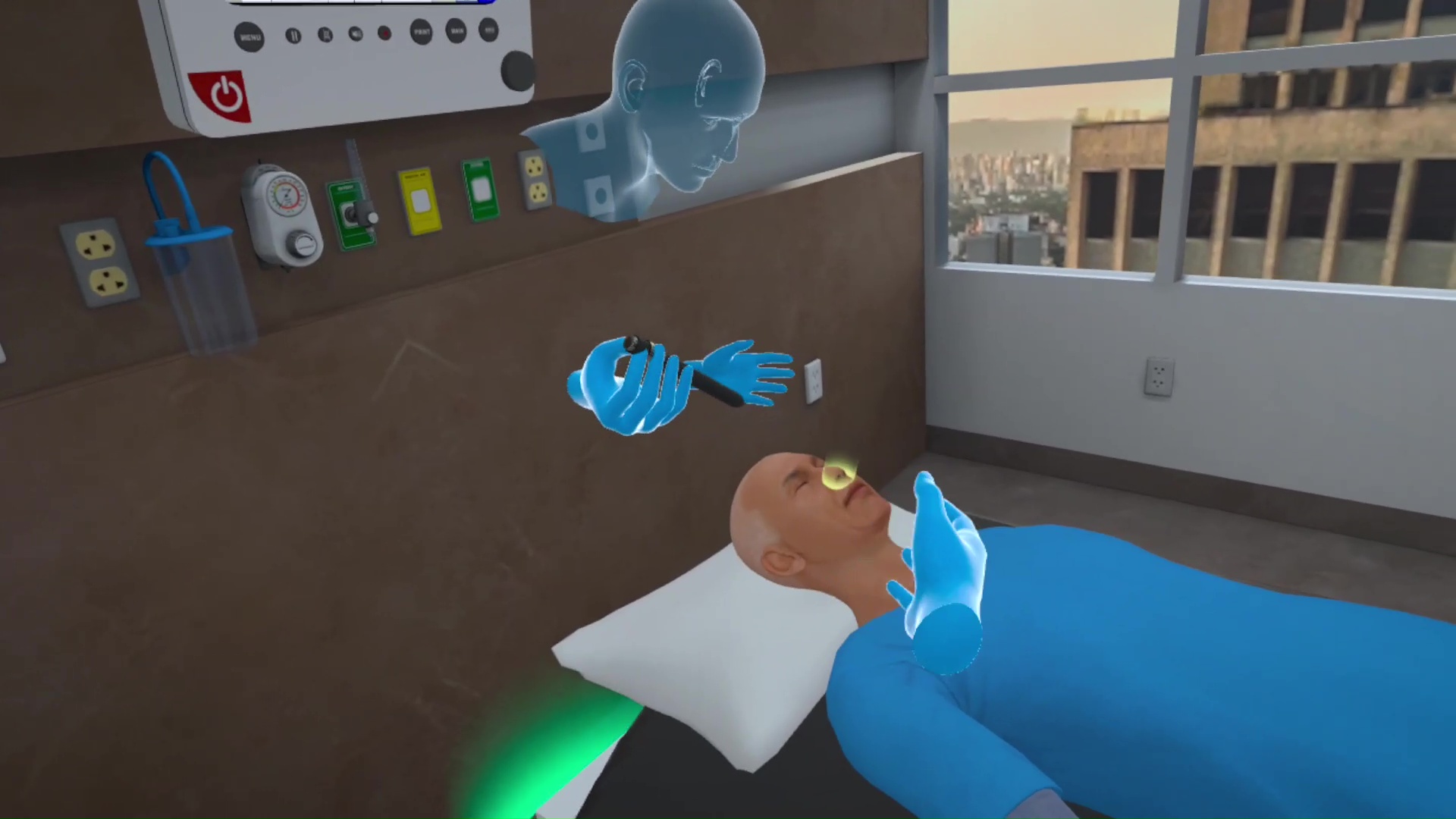Nasal Airways
Nasal Airways (nasopharyngeal airway) or NPA are airway adjuncts inserted into an unconscious or minimally responsive patient’s nose to maintain airway patency. This is done to prevent the tongue from covering the epiglottis. Nasal airways form a crucial part of emergency management.
This VR simulation for Nasal Airways is designed to help healthcare practitioners practice the procedure of nasal airway placement in a safe and controlled virtual environment with a virtual patient. With both training and assessment modes, learners can perform the procedure and assess themselves on their performance.
- Inspect and identify contraindications for nasal airway placement
- Use clinically approved method for choosing the correct size of a nasal airway
- Inspect nostrils for appropriate placement of airway
- Ensure proper placement of the NPA and secure airway patency
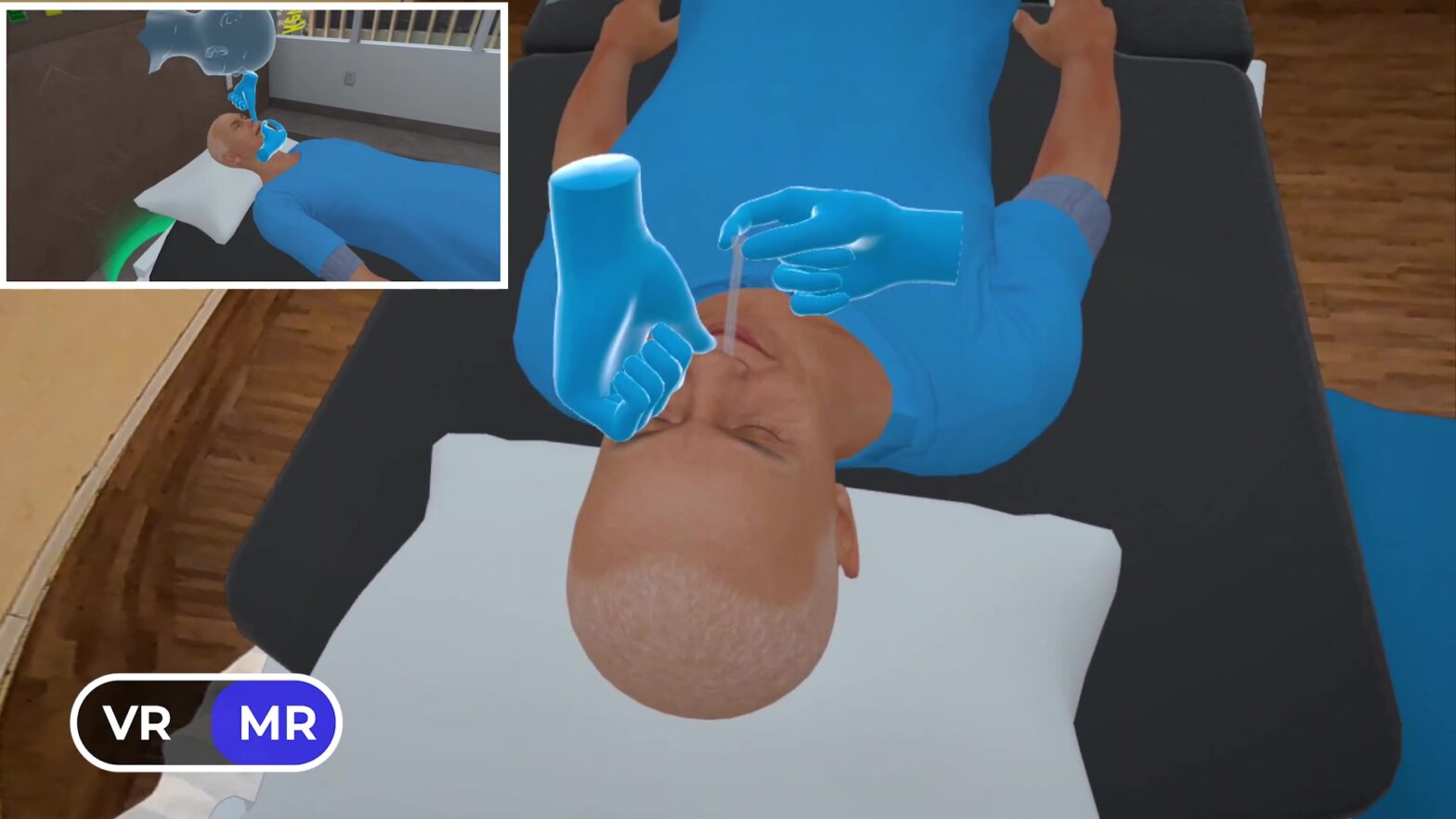
- StatPearls Publishing. (n.d.). Nasopharyngeal Airway – StatPearls – NCBI Bookshelf. Retrieved from https://www.ncbi.nlm.nih.gov/books/NBK537299/
- Geeky Medics. (n.d.). Nasopharyngeal Airway Insertion – OSCE Guide. Retrieved from https://geekymedics.com/nasopharyngeal-airway-insertion-osce-guide/
Customize Your Program
Get rid of the editor. Adopt in-VR customization.
MedVR Education is bringing to you in-VR customization that will enable you to customize your procedural simulations by making selections from a range of feature choices.
- Select patient from a diverse background
- Choose preferred virtual environment
- Select equipment used in the procedure
- Modify difficulty level of the assessment mode
- …..many more to come
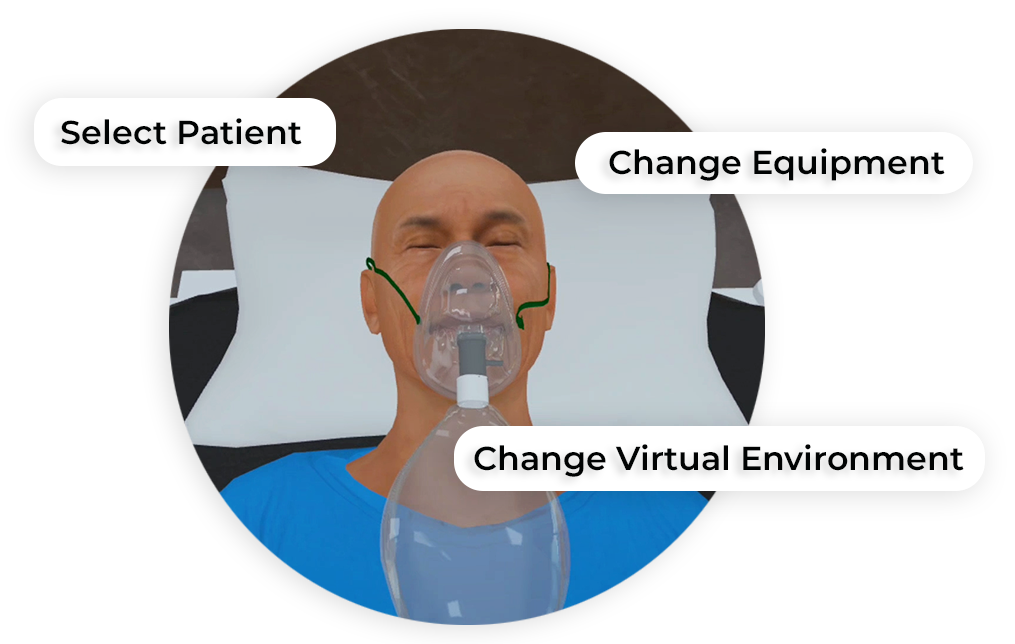
 Multi-player
Multi-player
Sessions Physics-based Interaction
Physics-based Interaction
Core Skills Training
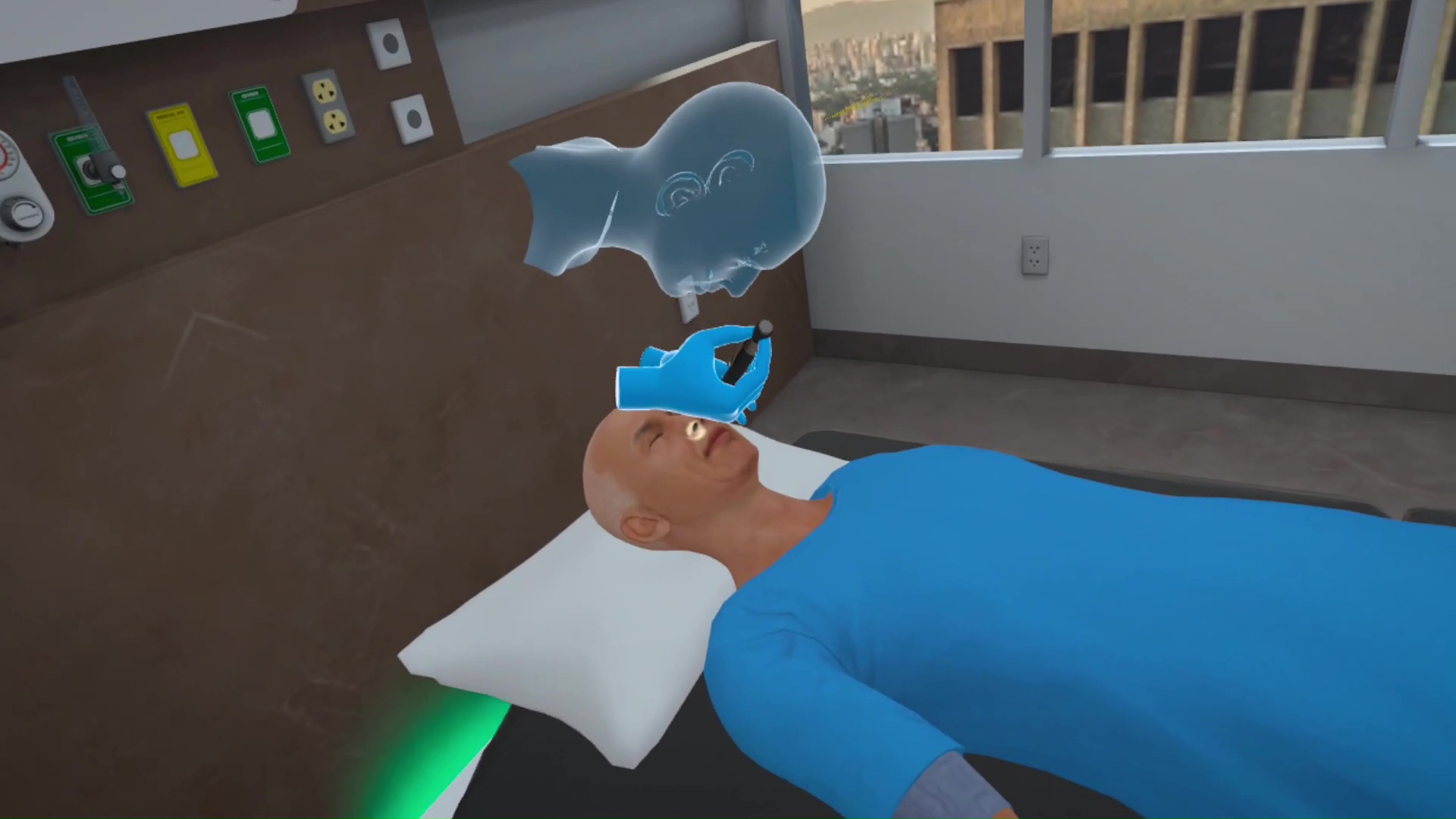
Placement of Nasal Airways
As a part of this Nasal Airway procedure, the user will begin the procedure by performing hand hygiene. After inspecting for contraindications the learner will measure and select the correct sized nasal airway. The learner will lubricate the tube, inspect the nostrils and proceed with the nasal airway insertion. The procedure will be complete after the airway is fully inserted and the user places a mask on the patient.
All necessary affordances are provided to complete the procedure with efficiency.
Training
With prompts, guidance and affordances learners are hand-held through the process to practice the procedure in a virtual environment with a virtual patient.
- Photorealistic virtual environment
- Physics-based interactions
- Detailed instructions
- Adequate affordances to assist in task completion
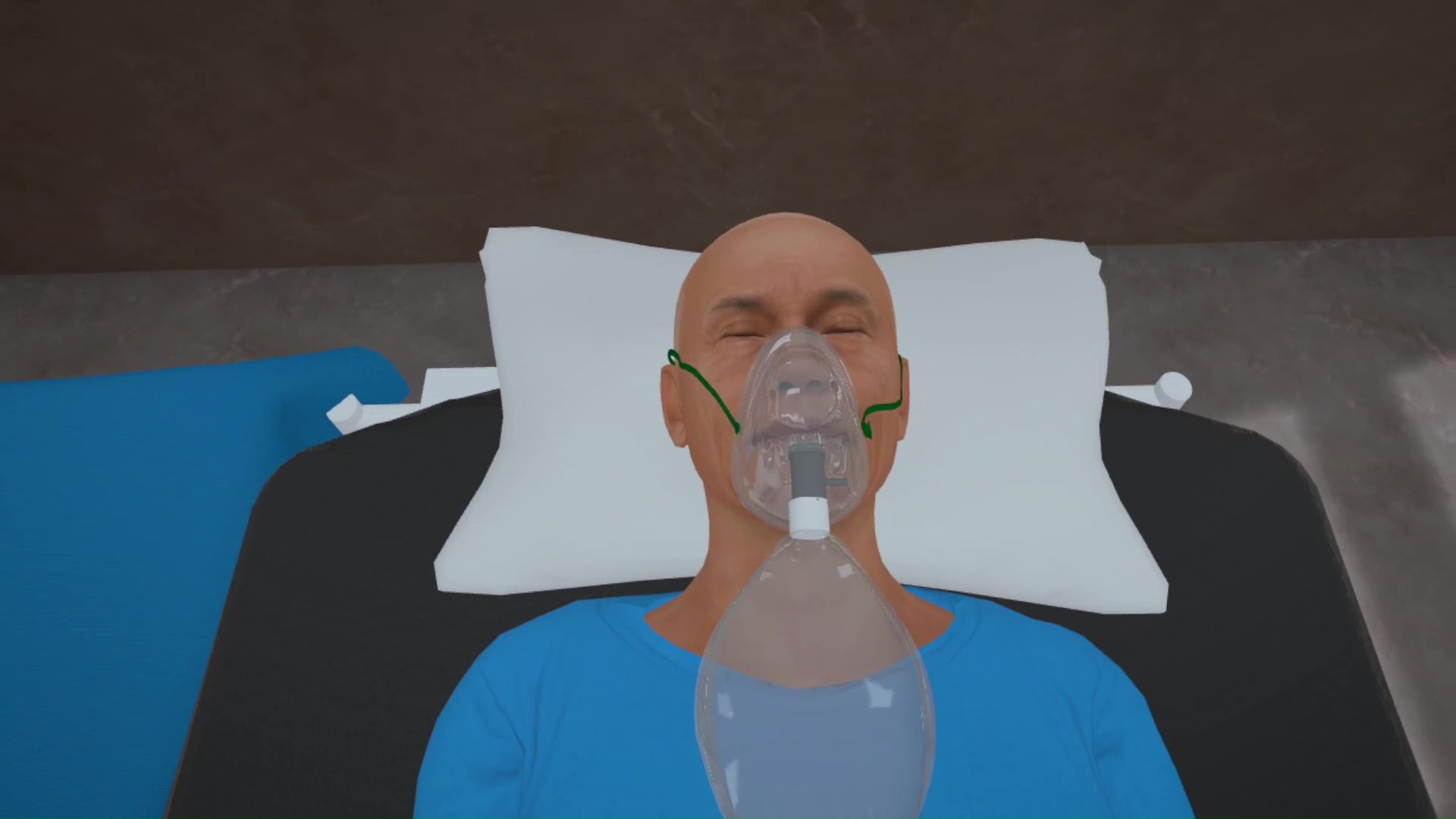
Assessment
Test acquired skills to perform the procedures from start to finish without prompts. An incorrect step will take the learner back to the start to start afresh.
- Live scoring
- Instant feedback
- Adequate affordances for efficient performance
- Time tracking to monitor activity completion
